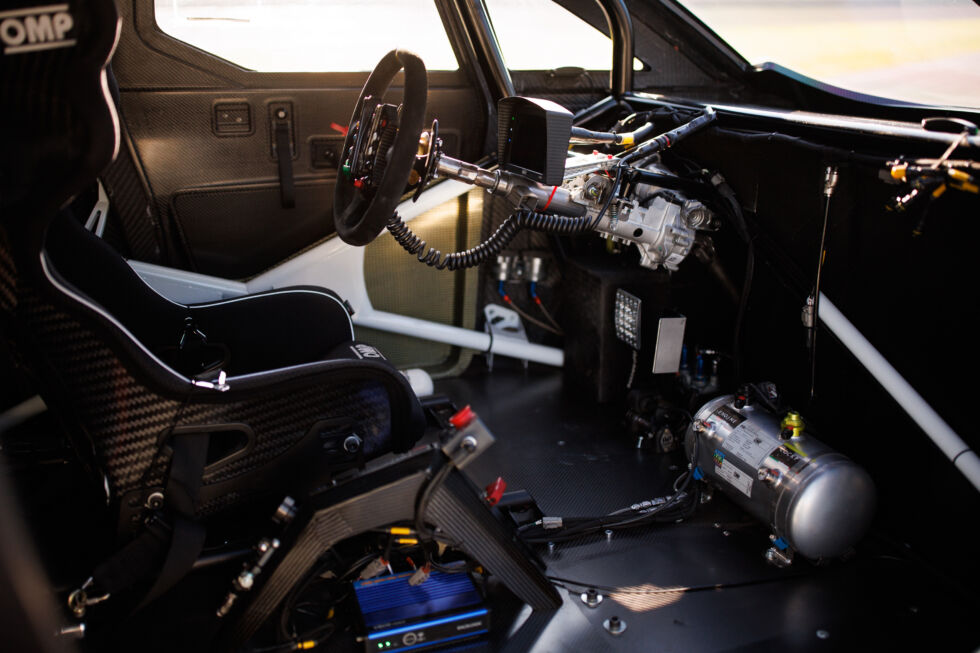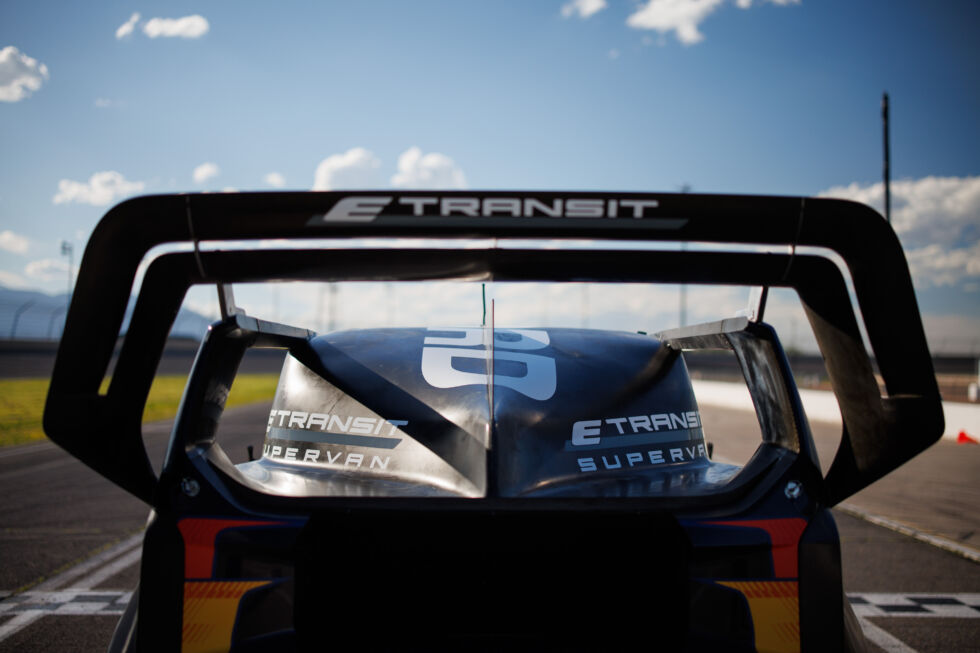
When Ford let Ars drive its new electric E-Transit van in early 2022, I probably annoyed the heck out of the engineers and executives by repeatedly suggesting they make a Supervan version. While I don't think for a minute that my bugging them had any effect, the company did just that, building a souped-up version of its electric commercial vehicle with almost 2,000 hp (1,400 kW) and aerodynamic appendages that would not look out of place on a Fokker Triplane. And this weekend, it's sending Supervan 4 to one of the hardest races in the world—the Pikes Peak International Hill Climb.
Supervan?
Ford's Transit van occupies roughly the same place in the European and British psyche as the pickup truck in the US. It's the default tradesperson's vehicle, available in various configurations and beloved by everyone from plumbers and builders to tour bands.

In 1970 or 1971, some bright spark at Ford UK had an idea to promote the Transit's image. A Transit body shell was mated to the chassis of a GT40 race car, complete with a 400 hp (298 kW) V8 engine. The Supervan was born, and it made its debut at a 1971 race meeting at Brands Hatch, just outside of London. Its performance was unlike any Transit van at the time, if a little pedestrian 52 years later—a zero-to-60-mph time of 7 seconds. For comparison, the current electric E-Transit is 0.6 seconds quicker off the line.
Supervan 2 followed in 1984. This time it was entirely custom-built, with a glass-fiber body that was a seven-eighths replica of the Mark 2 Transit, with a carbon-fiber and aluminum monocoque chassis underneath. Power was provided by a 3.9 L V8 Cosworth DFL engine capable of sending 590 hp (440 kW) to the rear wheels.
A decade later and the midlife refresh of the Mark 3 Transit gave Ford UK reason to dust off the Supervan chassis for yet another version. Supervan 3 still used a seven-eighths-scale body but swapped the DFL engine for a Ford HB. This 3.5 L V8 generated 650 hp (485 kW) and might be more familiar as the engine that took Michael Schumacher to his first Formula 1 championship. Sadly, a mid-90s F1 powertrain is horrifically expensive to run, and in 2001 Supervan 3 was parked for good.

The early 2000s did see another factory Ford Transit special—the World Rally Transit in 2001 used styling and interior parts from Ford's rally car—but it didn't offer anything like the performance of the Supervans.
Supervan 4 is a lot better than Superman 4
The newest Supervan broke cover at last year's Goodwood Festival of Speed. Like the new E-Transit, it's an electric vehicle, but this one was developed together with Austria's Stohl Advanced Research and Development (STARD). Like Supervans 2 and 3, there's not much that's shared with the road-going Transit van.
The body is made from carbon fiber and clad over a steel spaceframe chassis. Its 50 kWh battery pack is smaller than the production E-Transit's 68 kWh pack, and when Supervan 4 first appeared, it used four motors for a total power output of 1,973 hp (1,471 kW).
Ford and STARD have tweaked the van somewhat since then to prepare it for the challenge of Pikes Peak. Now it has just three motors, but that's still sufficient for 1,408 hp (1,050 kW). Now designated Supervan 4.2, it can also regeneratively brake at up to 600 kW.

Pikes Peak?
The annual Pikes Peak International Hill Climb is one of the world's oldest motor races. First held in 1916, it's a 12.4-mile (20 km) race up the side of the mountain in Colorado, starting at 9,390 feet (2,862 m) above sea level and finishing at 14,110 feet (4,300 m).
That change in altitude has given EVs a real competitive advantage at Pikes Peak; they are unfazed by a lack of oxygen, which translates to a significant power loss for internal combustion engines. In 2015, an EV set a new record for the shortest time to the top, which was comprehensively demolished in 2018 when Volkswagen took the electric ID.R to Colorado.
That VW was designed to generate as much aerodynamic downforce as possible to help stick the car to the road up above the clouds, and so, too, is Supervan 4.2. Ford says that at 150 mph (241 km/h), the EV generates more than two tons (2,000 kg) of downforce, which should be handy during Sunday's race.

Ford has also retained the skills of Romain Dumas as its driver—Dumas drove the VW ID.R to victory, as well as taking the overall win in other years in a gasoline-powered hill-climb car. Supervan 4.2 looks to be a fair bit heavier than the ID.R but also has more than twice the power, so it's possible he may break his own record of 7 minutes, 57.148 seconds.
The climb is unlike any other motorsport event on the calendar and takes place against a backdrop of spectacular scenery, but if you can't make it in person, it should be broadcast on YouTube this year.
Promoted Comments